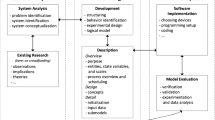Abstract
As a fundraising method, Initial Coin Offering (ICO) has raised billions of dollars for thousands of startups. Existing ICO mechanisms place more emphasis on the short-term benefits of maximal fundraising while ignoring the problem of unbalanced token allocation, which negatively impacts subsequent fundraising and has bad effects on introducing new investors and resources. We propose a new ICO mechanism which uses the concept of Gini index for the very first time as a mechanism design constraint to control allocation inequality. Our mechanism has an elegant and straightforward structure, which makes it explainable. It allows the agents to modify their bids as a price discovery process, while limiting the bids of whales. Under natural technical assumptions, we show that under our mechanism most agents have simple dominant strategies and the equilibrium revenue approaches the optimal revenue asymptotically in the number of agents. We verify our mechanism using real ICO dataset we collected, and confirm that our mechanism performs well in terms of both allocation fairness and revenue.

Similar content being viewed by others
Explore related subjects
Discover the latest articles, news and stories from top researchers in related subjects.Notes
If the whole coin reserve is released via the ICO mechanism, then an agent’s valuation is essentially her view of the market cap.
Even if less than k agents have positive budgets, we may still be able to find an infinitesimally small price that makes feasible allocation possible. If feasible allocation does not exist even with infinitesimally small price, then our mechanism fails. In this case, the mechanism designer should consider raising the Gini cap.
Given the coin price, according to Eq. (3), the cap C can be found in linear time (i.e., by finding the i index value that makes \(\frac{b_i}{p}\le C\le \frac{b_{i+1}}{p}\)). Once C is obtained, the minimum Gini value can be solved for in linear time. That is, every binary search step takes linear time only.
In practise, most ICOs are conducted over the Ethereum network. Here, an equilibrium will always be reached due to the transaction fees. In this paper, we do not consider transaction fees. Instead, we show that an approximate equilibrium does exist.
Our dataset and code can be found at: https://github.com/mingyuguo/gini_index_based_initial_coin_offering_mechanism.
Gini Rev. is higher than Opt. Rev. for Metronome due to numerical error.
References
Buterin, V. (2017). Analyzing token sale models, https://vitalik.ca/general/2017/06/09/sales.html
Conitzer, V., & Sandholm, T. (2002). Complexity of mechanism design. In A. Darwiche, & N. Friedman (Eds.), UAI ’02, Proceedings of the 18th conference in uncertainty in artificial intelligence, University of Alberta, Edmonton, Alberta, Canada, Morgan Kaufmann (pp. 103–110).
Duetting, P., Feng, Z., Narasimhan, H., Parkes, D., & Ravindranath, S. S. (2019). Optimal auctions through deep learning. In K. Chaudhuri, & R. Salakhutdinov (Eds.), Proceedings of the 36th international conference on machine learning, PMLR, Long Beach, California, USA, Proceedings of Machine Learning Research (Vol. 97, pp. 1706–1715).
Dworczak, P., Kominers, S. D., & Akbarpour, M. (2021). Redistribution through markets. In Econometrica (Vol. 89, Issue 4).
ICObench. (2018). ICO market analysis 2018, https://icobench.com/reports/ICO_Market_Analysis_2018.pdf
Momtaz, P. P. (2020). Initial coin offerings. PLOS ONE, 15(5), e0233018. https://doi.org/10.1371/journal.pone.0233018.
Rosen, J. B. (1965). Existence and uniqueness of equilibrium points for concave n-person games. Econometrica, 33(3), 520–534.
Roubini, N. (2018). Testimony for the hearing of the US senate committee on banking, housing and community affairs on “exploring the cryptocurrency and blockchain ecosystem”, https://www.banking.senate.gov/imo/media/doc/Roubini Testimony 10-11-18.pdf
Sanchez, D. C. (2017). An optimal ICO mechanism. SSRN Electronic Journal. https://doi.org/10.2139/ssrn.3040343
Shen, W., Tang, P., & Zuo, S. (2019). Automated mechanism design via neural networks. In Proceedings of the 18th international conference on autonomous agents and multiagent systems, international foundation for autonomous agents and multiagent systems, Richland, SC, AAMAS ’19 (pp. 215–223).
Sinha, A., & Anastasopoulos, A. (2015). Mechanism design for fair allocation. In 2015 53rd annual allerton conference on communication, control, and computing (Allerton), IEEE, Monticello, IL, USA. https://doi.org/10.1109/allerton.2015.7447041
Wit22. (2019). Bat ICO whale-sale—completely against the ethos of ethereum and cryptocurrency, https://www.reddit.com/r/ethtrader/comments/6efsc8/bat_ico_whalesale_completely_against_the_ethos_of/
Yokoo, M., Sakurai, Y., & Matsubara, S. (2004). The effect of false-name bids in combinatorial auctions: New fraud in internet auctions. Games and Economic Behavior, 46(1), 174–188.
Author information
Authors and Affiliations
Corresponding author
Additional information
Publisher's Note
Springer Nature remains neutral with regard to jurisdictional claims in published maps and institutional affiliations.
Rights and permissions
About this article
Cite this article
Guo, M., Wang, Z. & Sakurai, Y. Gini index based initial coin offering mechanism. Auton Agent Multi-Agent Syst 36, 7 (2022). https://doi.org/10.1007/s10458-021-09536-4
Accepted:
Published:
DOI: https://doi.org/10.1007/s10458-021-09536-4




